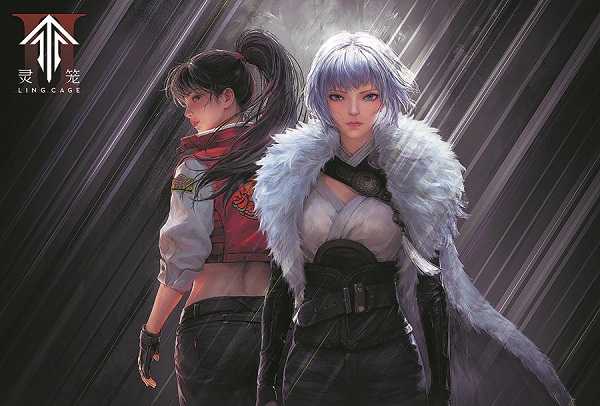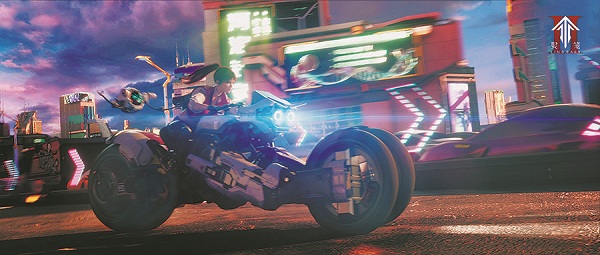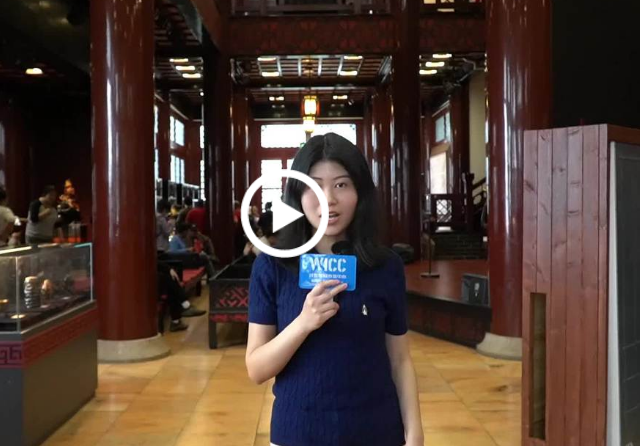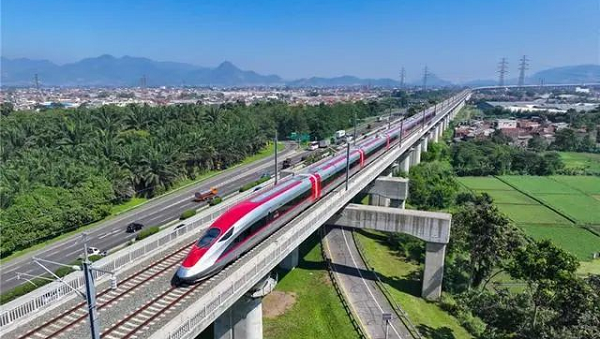A dystopian prospect

Bai Yuekui, a character in Ling Cage, looks formidable in both black and white hair. [Photo provided to China Daily]
Animated series shows a future where technology is dominant, Li Yingxue reports.
Amid the ever-present and kaleidoscopic neon lights, the dimly lit and humid alleyways, and the towering skyscrapers that pierce the clouds, lies Jiuchuan city — a cyberpunk haven that hints at various underlying anxieties beneath its apparent prosperity.
This evocative imagery is drawn from the 30-minute extended trailer of the second season of the domestic sci-fi 3D original animated series, Ling Cage. Within this series, viewers glimpse the semblance of a future world unrestrained by technological boundaries, prompting profound contemplation on the intricate interplay between technology and ethics.
Ling Cage primarily narrates the tale of survival in a post-apocalyptic world. Since its debut season in 2019, this domestic original animated apocalyptic fantasy has garnered acclaim for its compelling narrative and sophisticated post-production. Presently, it boasts over 610 million views on the leading short-video-sharing platform Bilibili, coupled with an impressive rating of 9.6 out of a total 10.
The release of the second season's trailer last month resulted in almost 10 million views within 48 hours.
For the 9 million fervent followers eagerly anticipating the second season, more content has been revealed, and maybe the launch time is poised to go live in the imminent future. Audiences can anticipate a more thought-provoking immersion into the sentiment of Chinese-style sci-fi and the quintessence of Chinese culture.
The narrative of Ling Cage unfolds in a futuristic setting, where an unprecedented geological disaster has laid waste to human civilization, pushing Earth's biosphere to the brink of annihilation. A floating fortress from the bygone era has managed to weather this catastrophe, emerging as the last bastion for humanity. This airborne sanctuary is christened the "Lighthouse" by its occupants, symbolizing its role in illuminating humanity's final future.

A poster for the domestic sci-fi 3D original animation series, Ling Cage. [Photo provided to China Daily]
In this unforgiving world, nefarious creatures on the ground pose a constant threat to human survival, and the intricate dance between good and evil, where moral lines blur, takes center stage in the narrative.
Ling Cage anchors its storytelling on themes of struggle and resistance, delving into the notions of "what is alive in the true sense". The plot weaves together individuals from diverse backgrounds, capturing the essence of difficult choices and authentic expressions in the face of insurmountable challenges.
The work resonates with deep reflections on human nature, survival and destiny, showcasing the distinctive allure of Chinese animation in both creative conception and artistic expression.
Ling Cage embodies China's profound cultural heritage rooted in traditional Chinese culture. With a unique perspective and expressive style, it presents to the audience a future world filled with Eastern mystique and humanistic care.
For instance, the ground team led by Bai Yuekui emphasizes the harmonious coexistence of humans and nature, aligning with the ancient Chinese philosophical concept of "unity between heaven and human beings".
In recent years, Ling Cage has stood out as one of the most substantial standalone animated series within the domestic animation landscape. Every facet, from script and storyboarding to modeling, animation, rendering and editing, has undergone meticulous refinement.
Du Yangyang, the producer of the series, says that the animation was made in 2017, a time when domestically produced sci-fi-themed animated works were scarce. "We positioned this work as an original 3D animated series with a Chinese-themed sci-fi apocalyptic genre," Du explains.
The collaborative effort of the nearly 100-member creative team behind Ling Cage, encompassing scriptwriters, concept designers, animators and CG (computer graphics) artists, has persisted since the project was announced in 2017, collectively bringing the envisioned narrative to fruition.
The allure of Ling Cage transcends its narrative setting, finding its essence in intricately depicted characters and a compelling narrative that deeply resonates with the audience. In terms of character portrayal, each figure in the animation boasts a vivid personality.
Take Bai, for instance — a combat powerhouse, a prodigious neuroscientist, and the epitome of a cool motorcycle aficionado. When Marc finds himself in peril, Bai's concise yet impactful and signature plea of "Save" (meaning saving Marc) injects a touch of warmth into her otherwise stoic and formidable persona.
"The core message of this animated series is how we should face adversity when it strikes," Du explains.
"In our work, we also hope that, through the characters' reflections and courage in the face of difficulties, we can provide some strength to those encountering challenges in real life. We want to convey the message that even in challenging circumstances, one should approach life with hope."
Chinese science fiction
The trailer for the second season takes the timeline of the story back to the early days of the old world, expanding the overall temporal dimension of the narrative and addressing some questions that arose in the minds of viewers while watching the first season.
Du explains that this extensive preview for the second season aims to further enrich the Ling Cage's worldview. The retrospective content also allows for a smoother narration in the second season, eliminating the need for excessive interjections of flashback scenes.
Du elaborates that after the conclusion of the first season in 2021, the team conducted a retrospective analysis, identifying areas where there was a lack of experience during the first season. They aimed to learn from these and make improvements in the second season.
"Whether it's in terms of the story, art or technology, during the first season, we encountered many challenges from the early planning and design phases to the actual execution. Our entire team has been continuously growing and overcoming difficulties," he says.
"During the preparation for the second season, we not only wanted to deliver better plot content to the audience but also aimed to integrate some improved three-dimensional animation techniques," he adds.
According to one of the writers, Wang Chenwei, the city of Jiuchuan in the preview of the second season represents the pre-disaster old world in the entire story. In Jiuchuan, every citizen's body is implanted with an interconnected chip, and the city's super artificial intelligence, ASH, can connect to each person, perceiving all their experiences.
"At that time, the level of technology was highly advanced, and the arrogantly confident humans of that era believed that technology could do anything. They recklessly developed technology to the point where they could no longer control the consequences," Wang says.
Many details in the city showcase the state of technological development at the time, such as advertisements challenging ethics with themes like human genetic modification and pleasure sharing.
"These details aim to reflect the severe imbalance between the spiritual cultivation of people in the old world and the speed of scientific development," Wang explains.
Wang is passionate about content in the sci-fi genre, and has been keeping track of advances in various cutting-edge scientific disciplines.
The scene in the trailer where Bai performs a craniotomy on an ancient creature deeply moved and shocked the audience. Wang did extensive research for this scene, studying the current process of craniotomy surgeries and consulting experts in neurosurgery and brainmachine interfaces.
"The sci-fi aspect of our work extends from a foundation of achieved realities, making reasonable imaginations based on facts," Wang says.
Chinese elements are also a highlight of this domestically produced sci-fi series. Taking the example of Bai, her attire incorporates Chinese elements. Particularly noteworthy are her attacking moves, which depict tai chi techniques such as yema fenzong ("wild horse separates the mane") and yunshou ("cloud hands"). Even her weapon is a knife of Tang-Dynasty (618-907) style.
The acupuncture scene in the animation further demonstrates the incorporation of Chinese elements. To ensure realism in this plot point, the creative team consulted experts in traditional Chinese medicine, striving to faithfully re-create Bai's acupuncture techniques.




